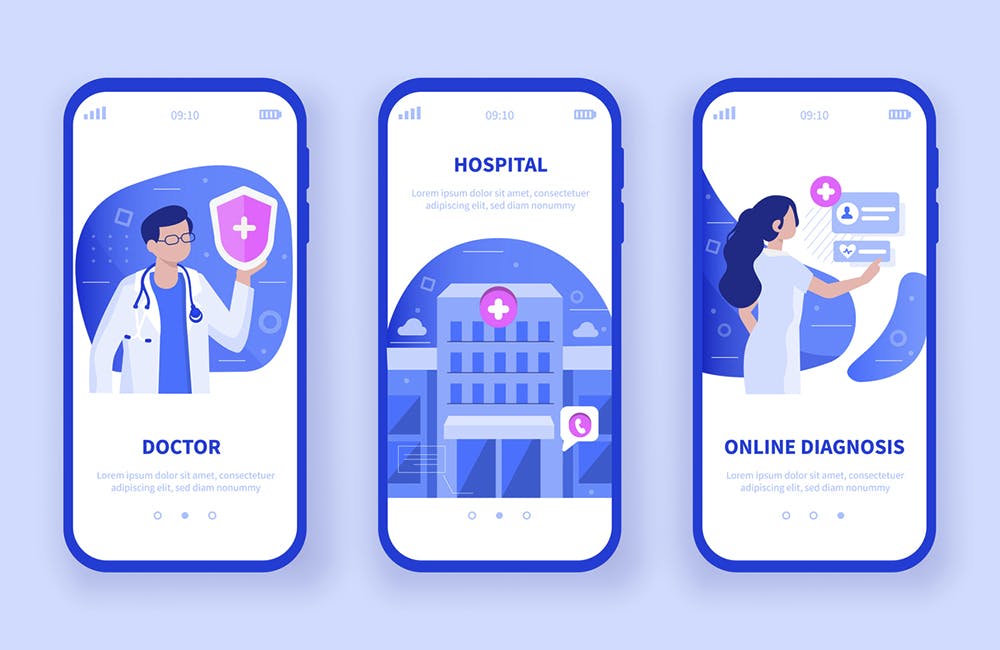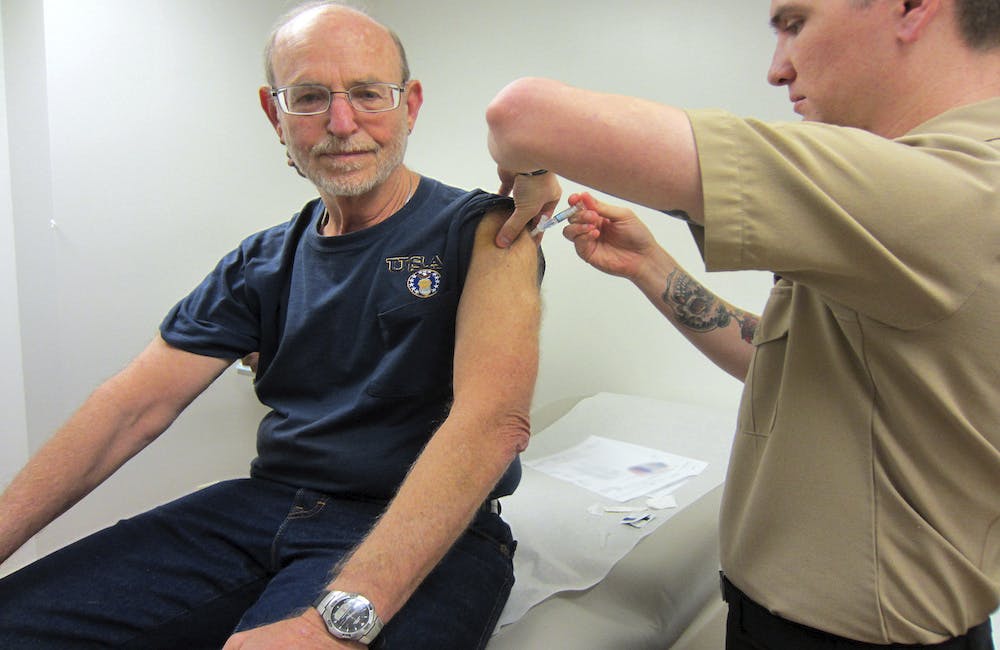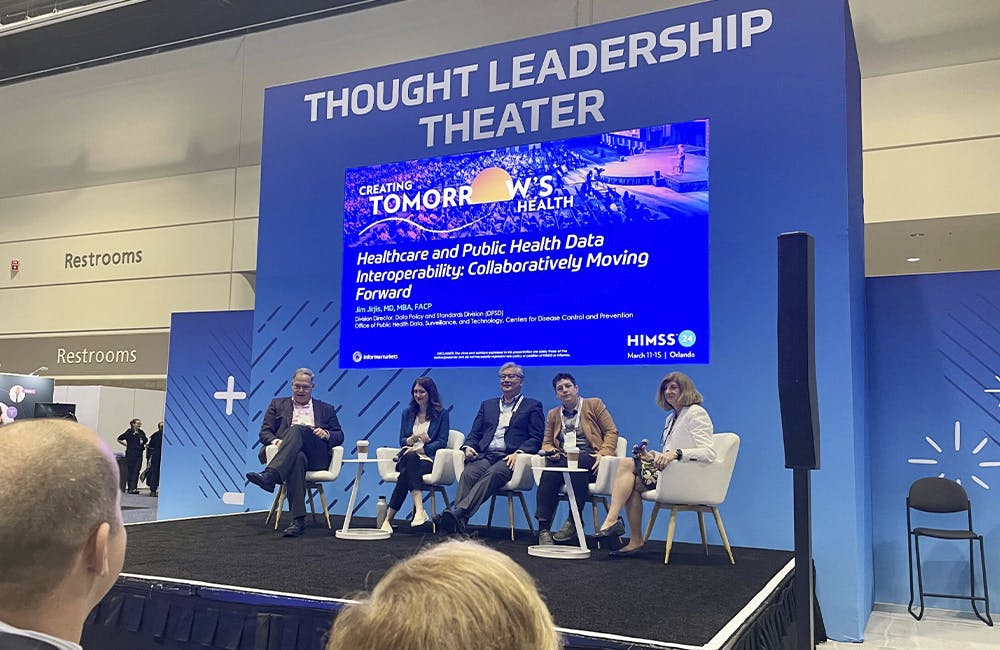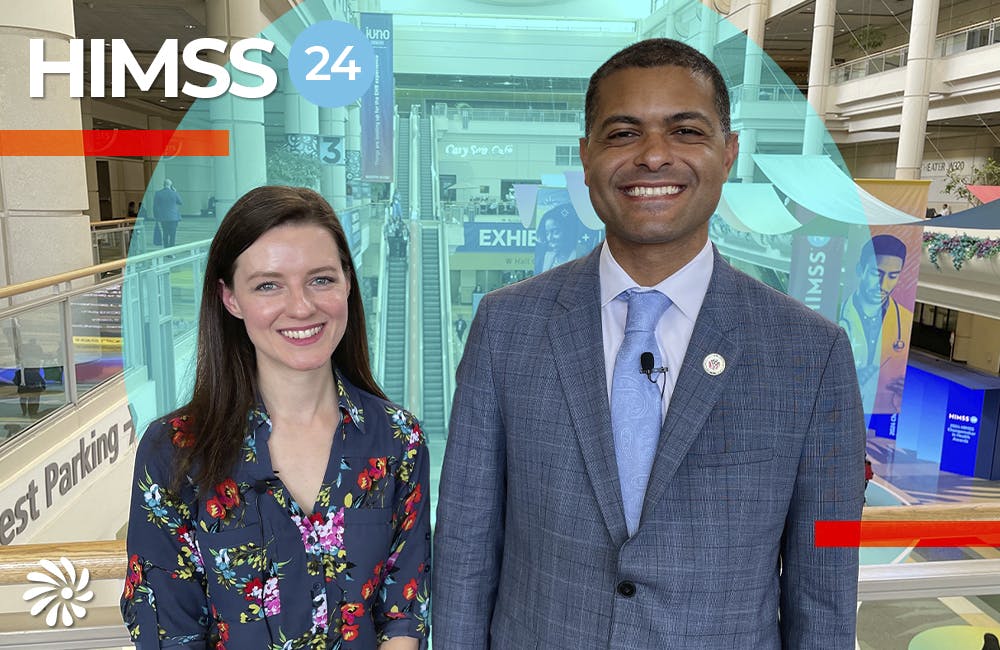ONC Senior Advisor Highlights How Data Sharing Will Shape Future of Health Care
Easing data sharing across health care holds potential for all stakeholders, from day-to-day care to public health crises.

The Office for the National Coordinator for Health IT’s release of its 21st Century Cures Act interoperability final rule last week cemented requirements for health IT developers that promotes secure, standards-based application programming interfaces.
With the final rule now in place, ONC Senior Advisor Mark Vafiades detailed the implications the rule will bring to the health care landscape — from aiming to empower patients over their health data to enabling rapid medical responses in both day-to-day care and in moments of public health emergencies like the current COVID-19 pandemic.
The Past and Present Data Sharing in Electronic Health Records
Electronic health records have evolved greatly over the past 20 years. In the 2000s, some EHR developers had achieved vertically integrated health care systems with EHRs that were interoperable across in-house networks but not with other health care systems outside of the EHR developers’.
Vafiades worked for Kaiser Permanente in the mid-2000s, learning about the importance of expanding interoperability and ability to share data to improve the ease of care and bringing that perspective to his position at ONC.
“I was really a true believer in the electronic health records and interoperability, and when I was with Kaiser — which of course was a vertically integrated health care system — it really was great interoperability, because at Kaiser, as with all vertically integrated health care systems, everything was under the same roof,” Vafiades said.
Having a vertically integrated health care system means that patients within that single health care system can see a primary care physician, specialist or emergency room, or get a lab test done, and allow all providers under that system see the same health record and all information and updates to it. However, Vafiades recognized that most people do not receive care under systems like this.
“When you’re in that silo of a vertically integrated health care system, you forget that the rest of the health care system is not necessarily that way,” he said. “Most people don’t necessarily get their health care from vertically integrated health care systems. They have a PCP over here, and they have specialists in a different medical group, and they’re going through private labs, and they’re going to CVS or Walgreens pharmacies, so they’re not necessarily communicating with one another.”
While health IT developers have driven greater interoperability and data-sharing efforts into their EHRs and health care systems, Vafiades said that developers still have not achieved “perfect interoperability.” This, Vafiades added, is largely because there has not been widespread incentive for organizations to pursue broad interoperability.
“The challenge has been companies not wanting to share and that has been for different reasons,” he said. “Some of it has been for technical reasons, some of it has been for expense reasons, that fact that the way we share was not standardized — so it was sometimes difficult to do so. And, also frankly, there have been some entities that didn’t want to share because they had no incentive to do so in that if people had the system they were on, they were sharing just fine, and by having a great system, it was encouraging other people to maybe buy into their system.”
Future of Health Data Sharing and Best Practices
Although health care systems in America have nudged toward a state of interoperability, Vafiades said that ONC’s 21st Century Cures Act final rule — which he added ONC worked on with the Centers for Medicare and Medicaid Services and the Department of Veterans Affairs — will help push those systems toward “true interoperability.”
More specifically, the rule will require that EHR developers standardize health data so that patients can more easily control their health information and easily transfer it to their providers — regardless of the health system or EHR.
“We have a lot of initiatives that come from the 21st Century Cures Act that are standardizing the information that is shared. We have something called the U.S. Core Data for Interoperability, and it is a dataset that will be standardized, and that will be what initially has to be shared, and it has to be in a form that is easily shared,” Vafiades said. “As we move forward, when EHR developers go to their next iteration, which has to be within the next couple of years, that will be standardized so that they’ll be able to share that information.”
For Vafiades and ONC, true interoperability across EHRs would look mean seamless portability of patient data, so that when any provider opens a patient’s health chart electronically, all of that individual’s health information is readily available and accessible.
In addition to standardizing electronic records, Vafiades said that that application programming interfaces, or APIs, will also enable standardized data and record sharing.
“There’ll be no question as to how you share with another entity,” he said of APIs. “You won’t have to contact each entity that you want to share with. … With the task of the task of the trusted exchange framework and common agreement, there’ll basically be one on-ramp for entities or health care entities to join, to connect to the network and share.”
APIs will also allow patients to download applications — which Vafiades said should be free for the public — that enable them on mobile devices to view, manage, and share their health records electronically with their various providers, regardless of the health system those providers are part of.
Vafiades likened the future of health care mobile applications to those of financial management apps, such as those provided by banks or apps that consolidate different financial management and banking services on one app. He added that ONC seeks the same levels of security as apps used for personal financial management to ensure the privacy and safety of patients’ records.
“There are even banking apps, such as Mint, where you have an app that connects to different banks, different financial institutions—you can connect to your different banks, your mortgage lender, your credit card institutions, your investment companies—and it all consolidates that onto your app,” Vafiades said. “When you validate that to make sure that it’s secure, it validates by going to the bank’s website to make sure you’re who you are. … That’s how it will validate when it goes to the different health care institutions to make sure that you are who you are, and it’s only you [who] can download that information.”
ONC is currently working on ensuring that there are guardrails for transparency across these applications in terms of how app developers use patients’ information. Vafiades said he aims to ensure that app developers clearly communicate with their customers when their information will be shares and to enable customers to decide what information of theirs that they want to share, if at all.
Vafiades expects that it will take about a year or two to really see the emergence of these types of applications for widespread use. He added that many EHR developers are developing their own applications and that developers are working with health care providers to optimize the end-user experience.
Data Sharing to Address Health Crises Like COVID-19
While the ONC final rule and increased interoperability of EHRs and data sharing will ease day-to-day health care, Vafiades said that it will also help enable more rapid responses to public health emergencies like the COVID-19 coronavirus.
In other words, not only will standardized, easier data sharing enable patients expedite their treatment through improved portability of their health information across their providers, but that shareable data will also enable public health officials analyze and track data to more effectively address epidemics and other health crises.
“As we move towards interoperability in the next couple of years, where the public health data will be more rapidly available — for example, when lab tests come back and there is a specific test that identified COVID-19 … we will instantly be able to see where those lab tests are testing positive, where people are being diagnosed and so forth,” Vafiades said. “We’ll have that general picture of where this is rapidly evolving.”
True interoperability will also make mass standardized health data readily available for analysis and response to these public health emergencies. Sharing respective data can enable public health officials and researchers to fuel labs and initiatives in countering pandemics like COVID-19.
“There’ll be much more data available for exactly this, and it’s pretty evident that in the fact that when you’re collecting all that data, we’ll be able to parse it and slice it and dice it based on diagnoses, based on lab results, based on a whole host of things,” Vafiades said. “You basically will be able to make inquiries and put in certain parameters, and the data will come back for public health use.”
This is a carousel with manually rotating slides. Use Next and Previous buttons to navigate or jump to a slide with the slide dots
-

CDC Updates Public Health Data Strategy
Accelerating data sharing through capabilities like electronic case reporting make up a large portion of the new two-year plan.
3m read -

VA Kicks Off EHR Program at Joint Facility with DOD
The agency's Dr. Neil Evans briefed how the Oracle-Cerner program rollout in North Chicago is informing next steps in EHR modernization.
4m read -

Health Agencies Tout Standards in Data Sharing, Interoperability
Officials from CMS, ONC and HHS spoke about data standards and how to help smaller health organizations make modernization progress.
3m read -

VHA Preparing for AI, Interoperable Future
The agency is spearheading initiatives to expand health care to veterans, including emerging technology and electronic health records.
6m watch








